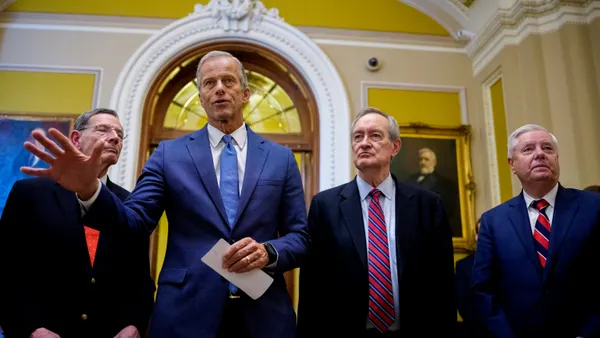Dive Brief:
- California could see roughly 7,500 MW of delayed or potentially canceled solar projects as well as the storage capacity attached to them as a result of a petition filed by Auxin Solar and the resulting U.S. Department of Commerce’s anti-dumping circumvention investigation of solar cells from four Southeast Asian countries, a representative for the Solar Energy Industries Association told state regulators Friday.
- Storage project development, meanwhile, is also being disrupted by severe COVID-19-related lockdowns in China, where a lot of the industry’s manufacturing, equipment and materials are based, according to the head of the California Energy Storage Alliance.
- The disruptions to clean energy project development are likely to also impact carbon reduction goals, Rick Umoff, SEIA’s senior director and counsel for California said at a California Energy Commission workshop Friday. Nationally, the association has seen utilities decide to hold off on procuring solar and retiring fossil fuel plants, he said, while in California, SEIA's main concern is a continued reliance on natural gas.
Dive Insight:
A multitude of factors are posing threats to California’s grid reliability at the moment: increased electricity demand due to heat waves, decreased hydropower production due to the drought, wildfires, the Department of Commerce’s solar cell investigation, as well as supply chain constraints related to the COVID-19 pandemic.
Earlier this month, California Gov. Gavin Newsom, D, proposed creating a $5.2 billion, up to 5 GW electricity reliability reserve in an updated budget, part of a broader, $8 billion proposed investment to support grid reliability and affordability.
This March, the Department of Commerce announced its intention to move forward with the anti-dumping circumvention investigation of solar cells from Cambodia, Malaysia, Thailand and Vietnam, in response to a petition from Auxin Solar, a solar panel assembler based in California. The investigation could take a year to resolve, and its impacts are already severe on the industry, Umoff told regulators at the Friday workshop.
SEIA has been surveying its members across the country and found that 83% of respondents report experiencing module supply delays or cancellations, and 70% of respondents reported that at least half of their solar and storage workforce is at risk, according to Umoff. One of the association’s concerns about the petition is that it could lead people to leave the industry, creating a need to rebuild the workforce in the future. Four out of five respondents reported that about half their 2022 solar project pipeline is at risk, and utility-scale solar project developers are the most impacted, he added.
“It’s a little difficult to determine what these impacts look like – we’re hearing [about] things like delays, cancellations,” he said.
Meanwhile, battery storage projects are being hit by skyrocketing lithium prices. Most storage projects have to go through a very competitive process for development, and have slim profit margins, Alex Morris, executive director of CESA, said at the workshop.
“And what this highlights is that the changes in the underlying and unhedgeable lithium carbonate costs will completely flip a project from lightly profitable to deeply unprofitable,” he explained. “So when you see that and we see these price spikes in lithium carbonate – like the 300% increase since last fall – you very quickly know that the projects will be underwater.”
Commodity lithium shipping price challenges can be partially resolved through “contract innovation,” especially by adopting floating or indexing provisions, Morris said – although, he acknowledged, this would require support for repricing contracts, “and that’s never a fun issue.”
In addition to the COVID-related shutdowns and rising lithium prices, the storage industry is also grappling with the effects of the Uyghur Forced Labor Prevention Act, which President Joe Biden signed into law at the end of last year.
“This also has to do with a region of China where some materials are sourced for clean energy industry technologies… a lot of industry folks are also wrapping their head around what this means, what’s compliance look like and getting organized,” Morris said.
There are multiple steps regulators and others can take to help alleviate some of these disruptions, according to both Umoff and Morris. For instance, for solar-plus-storage projects, they could look at deploying the storage ahead of the solar, if possible. The challenge with that, according to Umoff, is that many of the projects are financed as a bundle to take advantage of the federal Investment Tax Credit.
The state could also look at expediting permitting and siting processes for storage, as well as adding storage to existing solar projects, Umoff said. In addition, regulators could look at ways to provide more flexibility for current projects in the pipeline.
“One of our concerns is that if the pipeline is allowed to sort of die on the vine, we’re going to have to start over – and that’s going to be very expensive for the state. We have a lot of projects in the queue that are being developed and ultimately, those costs will float through to ratepayers, if we have a… more expensive new pipeline in the future,” he said.















